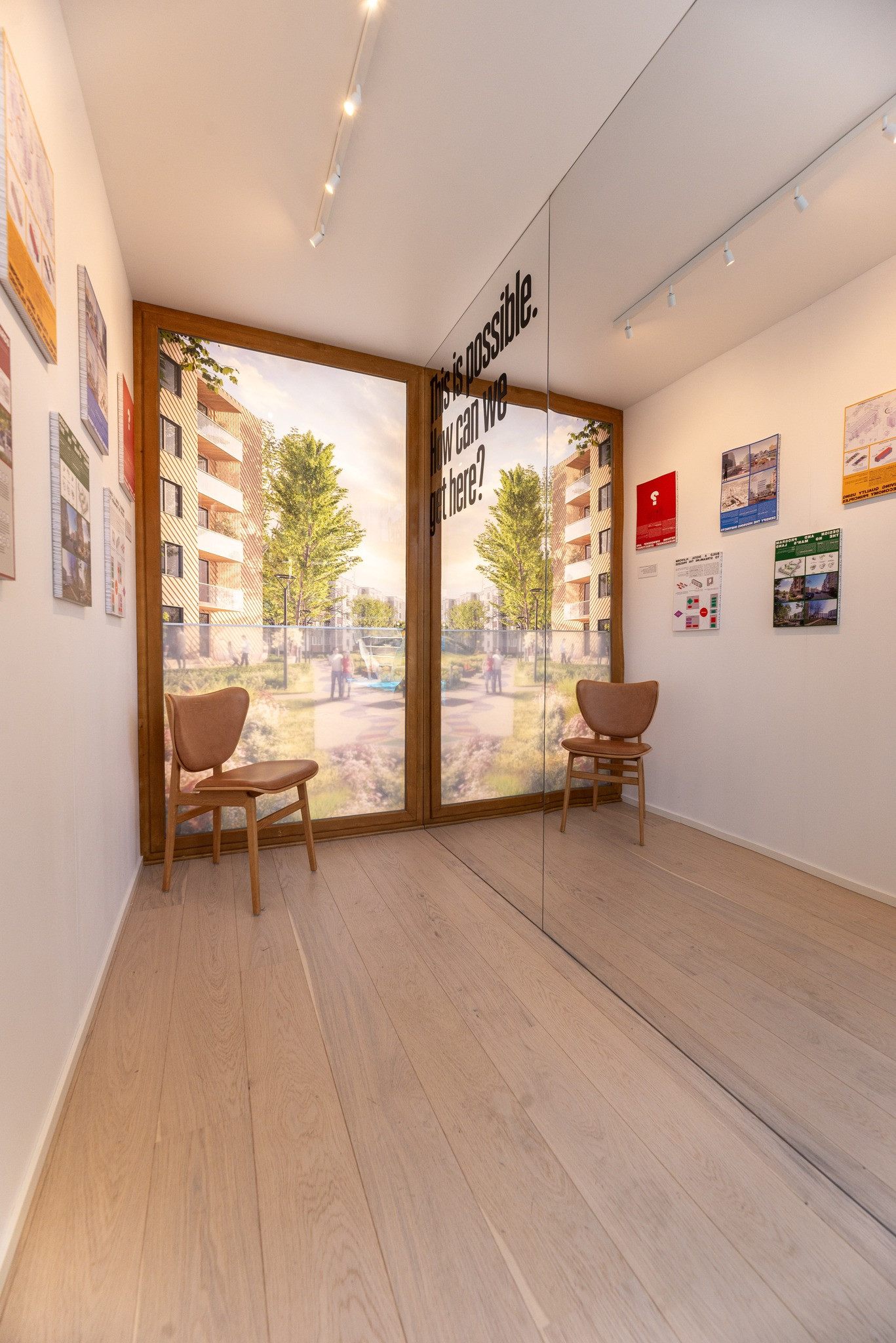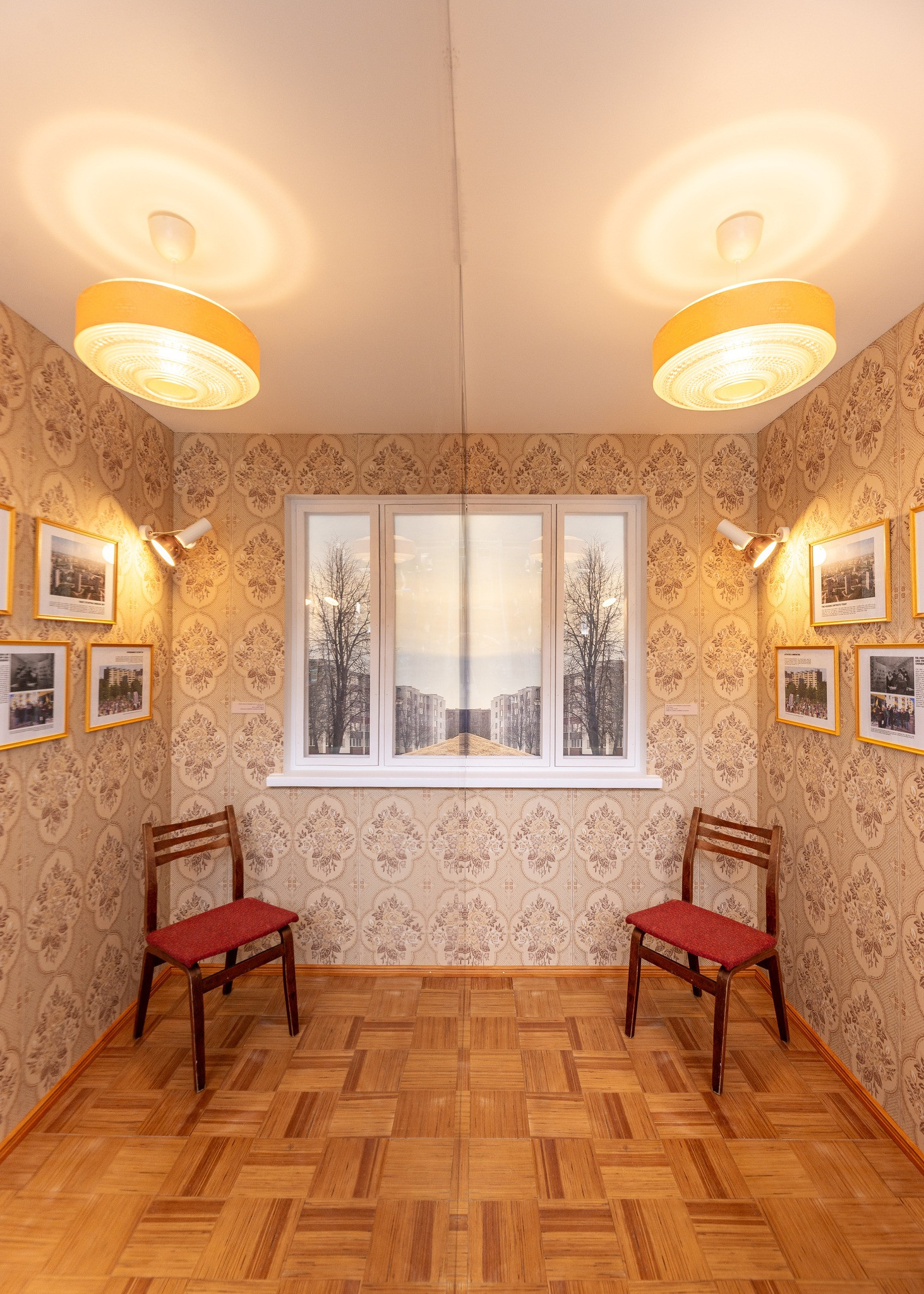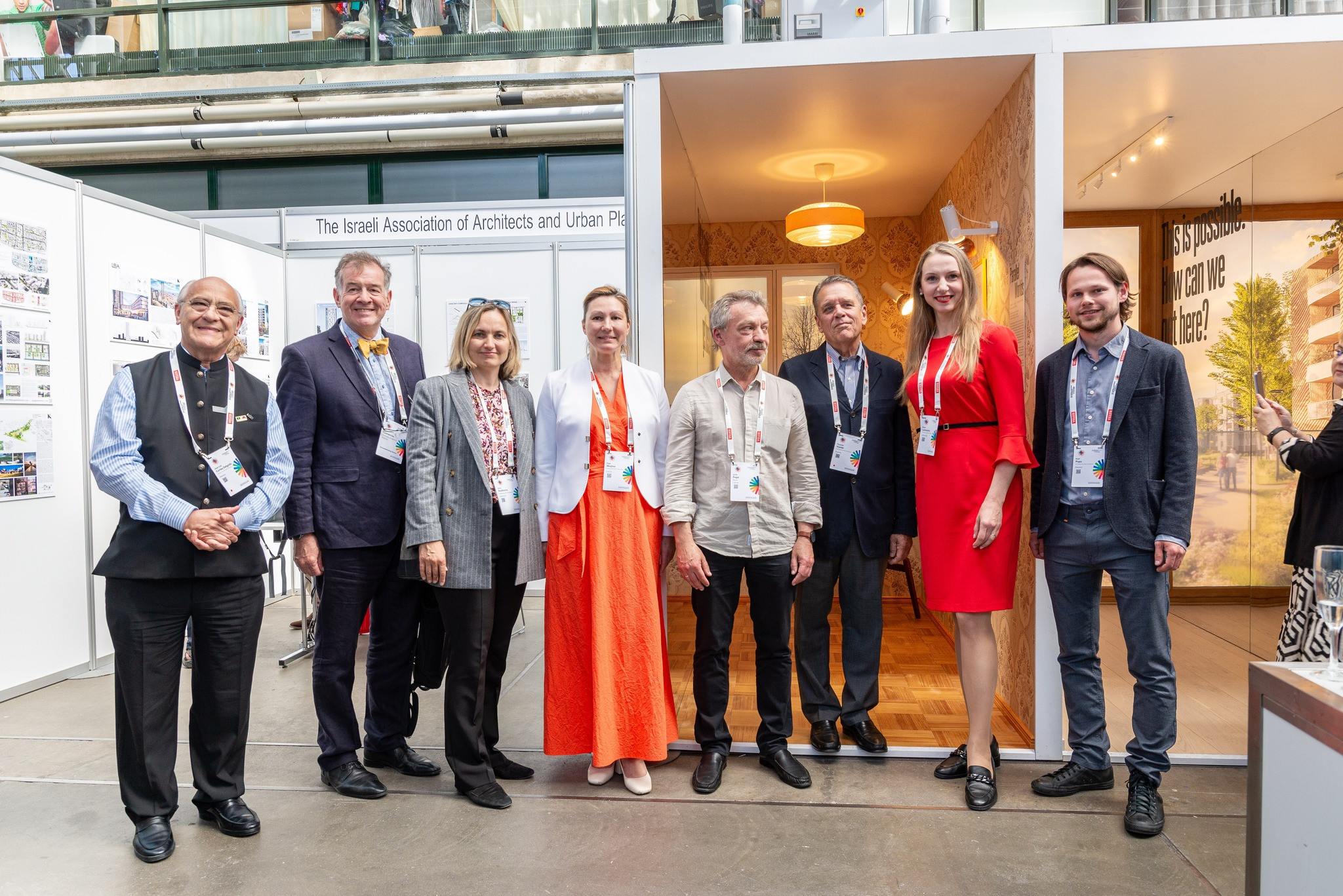BAUA Baltic pavilion at UIA World Congress of Architects in Copenhagen, 2023
The pavilion created by an Estonian architect at the World Congress of Architects brings into focus the need for high-quality modernization of panel block housing
At the UIA World Congress, which takes place from 2 to 6 July in Copenhagen, the joint pavilion of the Baltic states will be opened today. The author of the exhibition and pavilion concept is the Estonian architect Karl Pops. The pavilion deals more broadly with the burning issue of renovation of the outdated housing stock. It raises the question of how to make the existing Soviet era housing stock human-friendly and modern without a large environmental footprint.
The topic of the UIA congress Sustainable Futures – Leave No One Behind is the central, transformative promise of the 2030 UN Sustainable Development Goals.
„The congress will address how architects, urban planners and the building and construction industry are already contributing to the necessary transformation towards more just, resilient and including societies – and how it can be further improved,“ comments Ruta Leitanaite, vice-president of the Baltic Architects Unions Association (BAUA) and council member of International Union of Architects (UIA).
The joint BAUA pavilion, opening on July 4, focuses on the need for holistic renovation of modernist housing from the Soviet era. In connection with the European Green Deal and the goals of the European Commission to significantly reduce carbon footprint of buildings by 2050, this means for all member states, including Estonia, the need for massive renovation of older residential buildings. The initiative creates a public discussion to highlight challenges, share experiences and introduce best practices of holistic renovation of modernist housing.
According to the architect Karl Pops, the author of the BAUA pavilion Parallel Worlds, we are at a crossroads.
„In the Baltic states, like anywhere with a large stock of deteriorating housing from the modernist period, we have to choose how to address it going forward. The bones are good, the rest are not. There is a world in which the status quo continues, where piecemeal renovation of Soviet-era apartment buildings falls largely on individual owner cooperatives while the neighbourhoods stay isolated. But there can also be a world in which housing is recognised as critical infrastructure that needs a holistic vision and investment to ensure its sustainability. Which world do we want to live in?“ addresses the main question of the pavilion it’s author Karl Pops.
The BAUA pavilion illustrates this choice with the juxtaposition of two rooms of equal dimensions — one that represents a typical panel block apartment in its original state, and another that has been renovated to contemporary living standards and ambitions.
„It is not just a matter of aesthetics, but also of natural light, thermal comfort, indoor air quality, acoustics, and ultimately, human dignity. The well-being of residents, communities, cities and societies on the whole is at stake,“ Karl Pops emphasizes.
The author of the pavilion is architect Karl Pops, the technical implementation of the pavilion was carried out by interior architects Ardo Hiiuväin, Eeros Lees and Päär-Joonap Keedus. The graphic design was created by Martin and Marje Eelma (Tuumik).
The BAUA pavilion presented in Copenhagen will be the last collaboration between Estonian, Latvian and Lithuanian architects with the International Union of Architects. Unions of architects of three countries decided to end their membership in the UIA because they do not agree to be a member of an organization in which Russia and Belarus are still represented.
Supporters: Cultural Endowment of Estonia, State Culture Capital Foundation of Latvia, Lithuanian Council for Culture, Morbergs Studio, Interstudio/Norr11, JSC LNK Industries, Saint-Gobain, EVASAT Komforts, Forbo Flooring, Floorin/Haro, Knauf.




2025 © BAUA